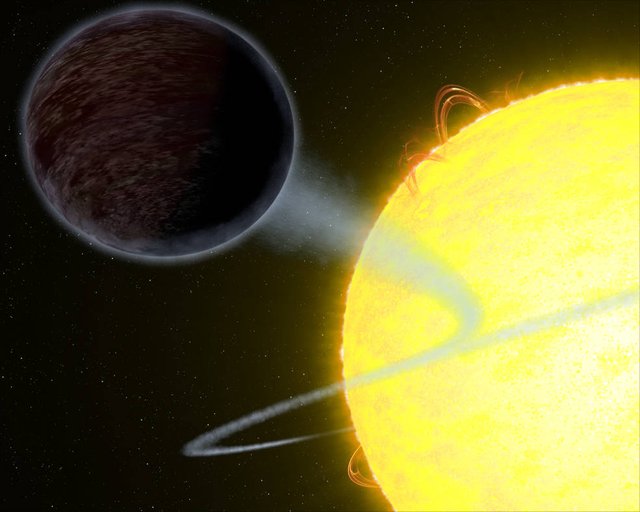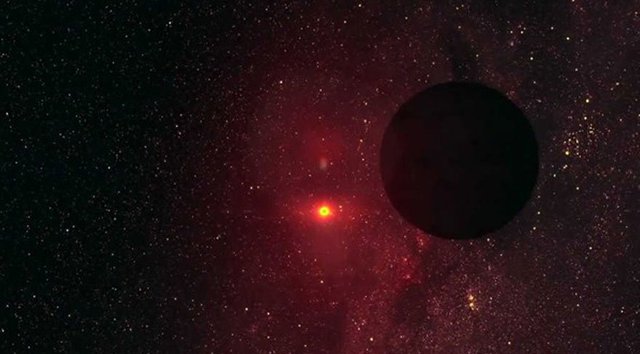The Hubble Space Telescope Finds a "Dark Planet"
Taylor Bell of McGill University and the Institute for Research on Exoplanets in Montreal, Quebec, Canada, has discovered an exoplanet that traps 94% of the visible light falling into its atmosphere.
WASP-12b
This newly discovered exoplanet is designated as WASP-12b. It is 1,400 light-years away in the constellation of Auriga. Subsequent observations of WASP-12b have reveal that the planets atmosphere is slowly being expelled from the exoplanet onto the star it orbits.

Image Source
"Hot Jupiters"
WASP-12b is in a class of exoplanets called "Hot Jupiters". It is twice the size of Jupiter.

Image Source
"Hot Jupiters" are gigantic, gaseous planets that are heated to extreme temperatures due to their close proximity to the host star.
Typical "Hot Jupiter" exoplanets reflect about 40% of the light falling onto its atmosphere. Unlike other "Hot Jupiters" WASP-12b traps 94% of the visible light falling into its atmosphere.

Image Source
The light penetrating the atmosphere is absorbed by hydrogen atoms and coverted into heat energy. The daylight side of WASP-12b reaches 4,600 degrees Fahrenheit. But there is no relief on its night side where it reaches 2,200 degrees Fahrenheit.
Sources and Full Articles
NASA's Hubble Captures Blistering Pitch-Black Planet, NASA, 14 September 2017
Thank You!
Thank you!
That is very close to the black hole, it needs more scientific research done on it.
This information is awesome did not know anything about the hot jupiter, greetings I follow you to continue reading you !!!